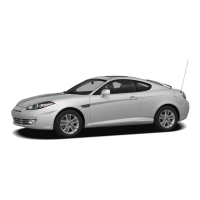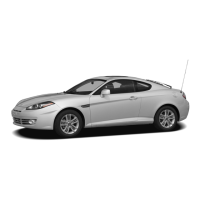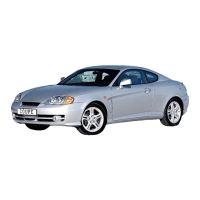3
WHAT TO DO IN AN EMERGENCY
3
!
D020A02A-AAT
WARNING:
The gas produced by the battery
during the jump-start operation is
highly explosive. If these instruc-
tions are not followed exactly, seri-
ous personal injury and damage to
the vehicle may occur! If you are
not sure how to follow this proce-
dure, seek qualified assistance.
Automobile batteries contain sul-
furic acid. This is poisonous and
highly corrosive. When jump start-
ing, wear protective glasses and be
careful not to get acid on yourself,
your clothing or on the car.
o The gas produced by the battery
during the jump-start operation is
highly explosive. Do not smoke or
allow a spark or open flame in the
vicinity.
o The battery being used to provide
the jump start must be 12-volt. If you
cannot determine that it is a 12-volt
battery, do not attempt to use it for
the jump start.
o To jump start a car with a discharged
battery, follow this procedure ex-
actly:
1. If the booster battery is installed in
another vehicle, be sure the two
vehicles are not touching.
2. Turn off all unnecessary lights and
accessories in both vehicles.
3. Attach the clamps of the jumper
cable in the exact location shown on
the previous page. First, attach one
clamp of the jumper cable to the
positive (+) post or cable of the
discharged battery. Then attach the
other end of the same cable to the
positive (+) post or cable of the
booster battery. Next, using the
other cable, attach one clamp to the
negative (-) post or cable of the
JUMP STARTING
o If you should accidentally get acid on
your skin or in your eyes, immedi-
ately remove any contaminated cloth-
ing and flush the area with clear
water for at least 15 minutes. Then
promptly obtain medical attention. If
you must be transported to an emer-
gency facility, continue to apply wa-
ter to the affected area with a sponge
or cloth.
1.6L/2.0L
HGK4001
HGK4002
Dis-
charged
battery
2.7L
Booster battery
Dis-
charged
battery
Booster battery

